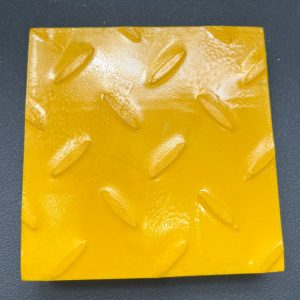How to Remove Fiberglass From Clothes
Fiberglass and Applications
Fiberglass, a material known for its high strength, lightweight properties, and corrosion resistance, has been widely used in various industries, becoming an indispensable component in modern engineering. In the construction industry, fiberglass grating modules and fiberglass reinforced plastic (FRP) covers are widely used in public facilities, industrial buildings, and transportation systems due to their excellent durability and corrosion resistance. In the transportation sector, fiberglass pedestrian covers are also used in the construction of sidewalks, bridges, and other infrastructure due to their superior load-bearing capacity and anti-slip properties. These applications not only enhance the stability of structures but also significantly extend their service life.
However, despite the many advantages of fiberglass in various fields, its fine fiber particles can detach during production, processing, transportation, and daily use, attaching to clothing or skin. The pricking sensation and irritation caused by fiberglass, particularly when handling products like fiberglass grating modules, fiberglass reinforced plastic covers, or fiberglass pedestrian covers, have become a challenge for both workers and consumers. Therefore, understanding how to safely remove fiberglass particles and taking appropriate preventive measures are essential to reducing the impact of fiberglass on human health.
How to Safely Remove Fiberglass from Clothing
Fiberglass, a material known for its high strength and corrosion resistance, is widely used in various fields, including construction, industry, automotive, and transportation infrastructure. Products such as fiberglass grating modules, fiberglass reinforced plastic covers, and fiberglass pedestrian covers have become integral parts of modern engineering due to their durability and stability. However, the fine fibers of this material can detach during processing, transportation, or daily use, potentially attaching to clothing and posing a risk to human health. Fiberglass can penetrate the skin, causing allergic reactions or irritation, and may also be inhaled, leading to long-term health issues. Therefore, it is crucial to understand how to safely remove fiberglass from clothing.
Wear Appropriate Protective Gear
Before handling fiberglass attached to clothing, it is essential to wear proper protective gear. Wearing protective gloves and a mask is necessary, especially when removing fiberglass from products like grating modules, fiberglass reinforced plastic covers, or fiberglass pedestrian covers, as these products may contain significant amounts of fiberglass particles. Using a mask helps prevent the inhalation of fine fiberglass particles, while gloves protect the skin from fiberglass irritation and penetration.
Gently Remove Fiberglass
One of the most common methods for removing fiberglass from clothing is using adhesive tape. Gently press transparent or cloth-backed tape onto the area where fiberglass particles are attached, allowing the tape to lift most of the fiberglass fibers. Whether from the production environment of fiberglass grating modules or during the use of fiberglass reinforced plastic covers or pedestrian covers, fiberglass particles can fall off, making this method effective in removing the small particles from clothing.
This method is not only gentle and effective but also prevents further spreading of fiberglass particles to other clothing or surrounding areas. Repeatedly use the tape to remove fiberglass until there are no visible particles left, significantly reducing the complications during subsequent cleaning.
Washing the Clothing
After using tape to remove some fiberglass, small fibers may still remain on the clothing, especially finer particles. To further clean the clothing, it can be placed in a washing machine and washed with warm water. The combination of warm water and laundry detergent helps dissolve and remove any remaining fiberglass particles on the fabric. It is important to note that fiberglass fibers may detach during the washing process and contaminate other clothing, so it is best to wash contaminated clothing separately.
For more stubborn fiberglass particles, the clothing can be soaked in warm water for a while before gently brushing it with a soft-bristled brush. The brushing action should be gentle to avoid damaging the fabric. During washing, adding some cleaning detergent can help remove residual fiberglass particles.
Cleaning the Washing Equipment
After washing the clothing, some fiberglass particles may remain inside the washing machine, especially when cleaning work clothes contaminated with fiberglass from grating modules or fiberglass reinforced plastic covers. To ensure thorough cleaning, it is recommended to wash the washing machine with clean water to remove any potential fiberglass particles. Regularly cleaning the washing machine helps prevent contamination of other clothing during future washes, especially when dealing with clothing heavily contaminated with fiberglass.
Avoid Direct Contact
Throughout the process of removing fiberglass, always avoid direct contact with the fibers. While fiberglass itself does not cause long-term harm to the body, prolonged skin contact with its fine fibers can cause allergic reactions or other discomfort. Therefore, when cleaning clothing, it is important to handle the fibers carefully and avoid direct hand contact, especially when handling products like pedestrian covers or grating modules that contain fiberglass.
Conclusion
Although removing fiberglass from clothing may seem simple, it requires careful attention, especially when working in environments where fiberglass products like grating modules, fiberglass reinforced plastic covers, and pedestrian covers are used. By taking appropriate protective measures, gently removing fiberglass from the clothing using adhesive tape, followed by warm water washing and cleaning the washing machine, the risks associated with fiberglass exposure can be significantly minimized. Remaining vigilant during the process and avoiding direct contact is key to ensuring safety. Through these reasonable steps, individuals can protect themselves from the irritation caused by fiberglass and ensure the cleanliness and integrity of their clothing.
 |

